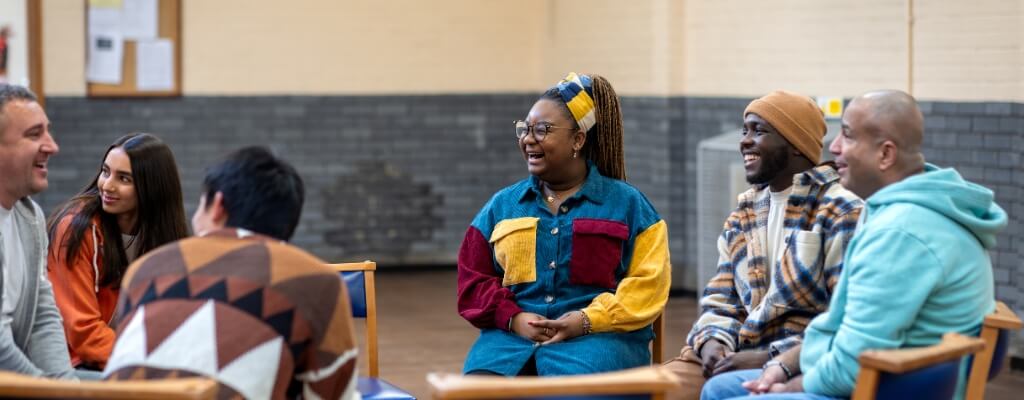The words we choose shape our relationships every single day. We all want to feel seen, safe, and understood by the people closest to us—our families, friends, and coworkers. But even small misunderstandings can lead to hurt feelings and broken trust. Many of us grew up repeating old patterns that were passed down from one generation to the next. These ways of speaking sometimes carry pain from past family trauma or even from hurts in our wider communities. Nonviolent communication helps us build new habits. It gives us simple steps that open doors to kindness, respect, and real connection.
Nonviolent communication, or NVC, helps us heal and stop the cycle of generational and intergenerational trauma. In this blog, let’s skim through what nonviolent communication is, where it came from, and how anyone can use it to build stronger, kinder relationships every day.
What Is Nonviolent Communication?
Nonviolent communication started with a man named Marshall Rosenberg. He saw that how we talk to each other can create either peace or pain. Rosenberg built a system that makes it easier for people to share what they are truly feeling and needing.
NVC is not only about what we say, but also how we listen. It is a way of speaking and listening that puts kindness first. With NVC, we describe what happened, share our feelings, tell our needs, and ask for something clear. The main idea is to care, to connect, and to avoid hurting others—even by accident.
The Four Components of Nonviolent Communication

Nonviolent communication uses four simple steps. These help make your message clear and gentle. Each step builds on the other, like rungs on a ladder.
Observations
Start by saying what you see and hear, without mixing in your opinions or blame.
Example:
- Instead of: "You never listen,"
- Say: "When I speak and you look away, I feel unsure.”
- Many find more trust and new kindness.
Feelings
Example:
Share your feelings next. Do not use words that blame or shame.
- "I feel sad," or "I feel left out.”
Needs
Say what you need. This draws from what is happening inside you, not from what others “should” do.
Example:
- "I need to feel heard when I share something important,”
Requests
Ask for something specific and clear.
Example:
- "Would you be willing to listen to me for five minutes without interruption?"
Let us put it all together:
- "When I speak and you look away, I feel sad. I need to feel heard. Would you be willing to listen to me without interruption for five minutes?"
This pattern works for small issues and big problems.
How Nonviolent Communication Differs from Traditional Communication Styles

Nonviolent communication is different from how many people grew up talking. Most of us learned to use sarcasm, blame, or silence to handle hard feelings. Sometimes we judge, yell, or ignore. These habits keep misunderstandings alive and make feelings of pain last longer.
NVC asks you to listen with empathy. It does not look for someone to blame. It does not use guilt. It shows respect, even if you are upset. This approach lets people share openly. It lowers the wall that defense and judgment build. Instead of asking, “Who is right?” NVC asks, “What matters to us right now?” This way of talking gives space for everyone, no matter their story.
How Nonviolent Communication Can Improve Your Relationships
Using nonviolent communication in your daily life can help you build more trust and kindness. It is useful with children, partners, parents, friends, or even strangers.
For families who grew up carrying intergenerational and generational trauma, this approach is even more powerful. NVC breaks old cycles. It replaces pain with understanding, hurt with hope.
Fostering Emotional Connection and Understanding
Nonviolent communication lets people share true feelings and deep needs. This helps others listen with open hearts, not just open ears.
When you share feelings and needs in simple, honest words, trust grows. People start to feel safe telling the truth. Misunderstandings fade. Both sides feel seen, even in hard times.
Repairing and Preventing Harm in Challenging Situations
Tough days happen. Anger and stress can bring out old habits. People say things they regret or hurt each other without meaning to.
Nonviolent communication gives you a roadmap when talks get tough. Instead of yelling or shutting down, you can use the four steps to slow down the moment. “When this happened, I felt scared. I need to know this is safe. Can we talk?” These words open the door to healing.
If there is pain from the past, even from earlier generations, NVC can help stop the cycle. It helps people see the pain, give it a name, and start to repair it together.
Practical Ways to Incorporate Nonviolent Communication Daily
You can use nonviolent communication in many small ways each day:
- Pause before reacting. Take a slow breath. Ask yourself, "What did I see or hear? What am I feeling? What do I need?"
- Use "I" statements. Take a slow breath. Ask yourself, "What did I see or hear? What am I feeling? What do I need?"
- Make clear requests. Ask for something possible, not a big change all at once.
- Practice with friends or family. Share the four steps. Help each other learn NVC together.
- Read books or join a therapist. Learn more about NVC with others.
You might try these words for common situations:
- "When you walk away during our talks, I feel upset. I need to feel close. Will you sit with me for a few minutes?"
- "When you help me clean up, I feel thankful. I need support, and this matters to me."
Small, simple changes make a big impact.
The Bottom Line
Nonviolent communication can change how you live and connect with others. It gives you tools to heal and grow, even if you carry pain from the past or from family stories passed down for years. NVC lets you speak, share, and listen in ways that build trust and peace.
You can stop old patterns tied to generational trauma and intergenerational trauma. You can teach your children or friends how to use these simple steps. You can work toward a home, a family, or a workplace built on kindness and respect.
If you want to feel more peace in your relationships, start with one small step. Try one part of nonviolent communication today. Notice what changes for you. If you want to learn more, look for NVC books, therapy classes, or support groups in your area. Start building bridges—with your words, your heart, and your actions.

